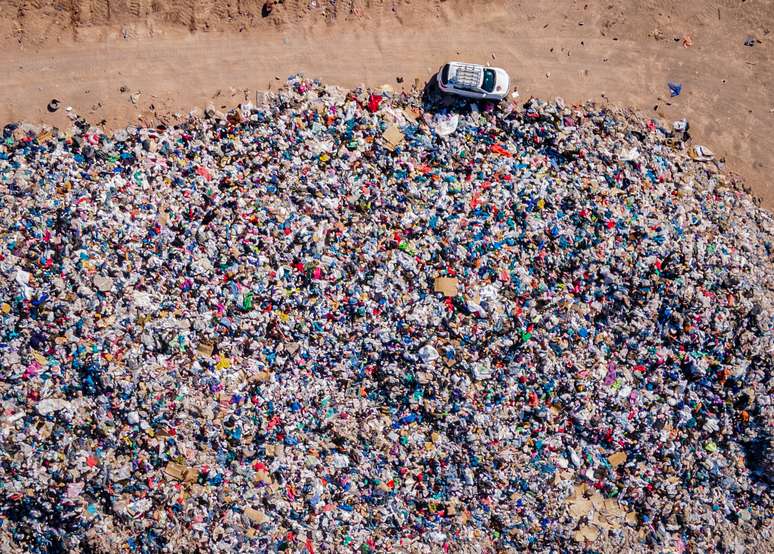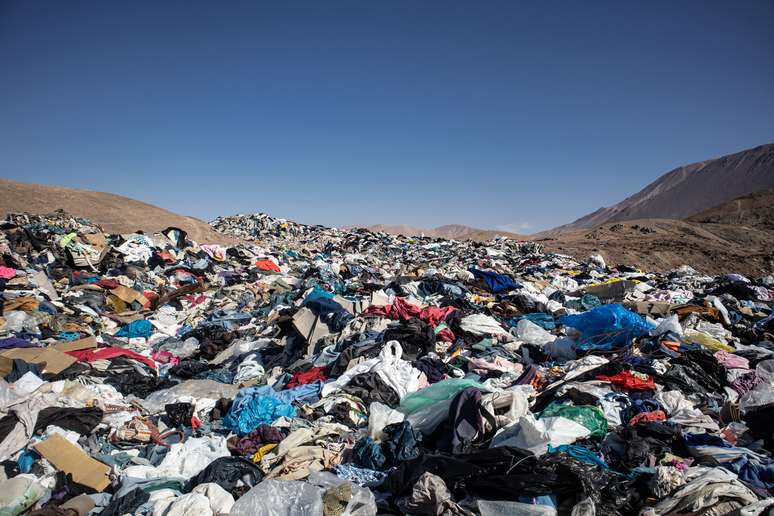In Brazil alone, 170 thousand tons of textile waste are thrown away every year
The Atacama Desert, in Chile, has peculiarities that attract tourists from all over the world. Considered the highest desert in the world, it attracts the attention of adventure enthusiasts, astronomers and archaeologists. However, its sands hide an unusual detail: an open-air landfill, nicknamed the ‘Cemetery of Used Clothes’, which between January and October 2021 alone received more than 21 tons of discarded fabrics.
According to the Global Fashion Agenda organization, in recent years, 92 million tons of textile waste were thrown awayand the trend is for this number to increase by 60% over an eight-year period. In Brazil, according to Sebrae, 170 thousand tons of textile waste are thrown away every year.
Photos of “mountains” of discarded clothing in the Chilean desert went viral in 2023 and raised an important sustainability question: How should clothing and waste be disposed of properly?
And – unlike waste such as paper, plastic, metal and glass, a constant target of recycling campaigns that are already part of the routine of millions of Brazilians -, the destination of clothes and fabrics may not be so obvious and still leaves doubts.
therefore, the Earth We have prepared a guide to help you know when to donate, reuse or recycle these materials efficiently and sustainably.

Textile waste and microplastics
First of all, it is important to understand that, in addition to clothes, the remaining fabrics of clothes are also considered textile waste, explains stylist and professor at the Federal Institute of Santa Cantarina (IFSC) Bruna Lummertz Lima.
Most garment fabrics are produced from polyester or polyamide, which are similar to or made from plastic, Bruna explained in an institute article.
Among the substances that make up clothing and which can be harmful to the environment, in addition to plastic, there are dyes, which can pollute water and soil, and chemical products, used in the production of clothing and which can be harmful both for nature and for the human health environment.
Correct disposal
You need to consider a few factors before discarding an item of clothing or fabric, according to the stylist. For example: If there is damage, can it be repaired? The repair, according to Bruna, is cheaper than a new part, as well as being more sustainable. Another alternative is to donate the piece to charities or charity thrift stores.
The designer also encourages exchanging pieces between friends. “It’s an opportunity to change up your wardrobe while being sustainable and without spending money.” The clothes can also be sent to local institutions that repurpose the pieces, repurposing the fabric for new products.
In the case of unusable parts, the material can be sent to textile recycling which, unlike other disposable waste, requires defibration, a process that transforms worn fabrics into new threads to be used as raw material in other products.
Textile recycling complies with the National Solid Waste Policy (PNRS). There are also manufacturers who carry out reverse logisticsreceiving worn clothing for proper disposal, as well as retail chains offering collection points and their own clothing recycling programs.
Source: Terra
Ben Stock is a lifestyle journalist and author at Gossipify. He writes about topics such as health, wellness, travel, food and home decor. He provides practical advice and inspiration to improve well-being, keeps readers up to date with latest lifestyle news and trends, known for his engaging writing style, in-depth analysis and unique perspectives.









